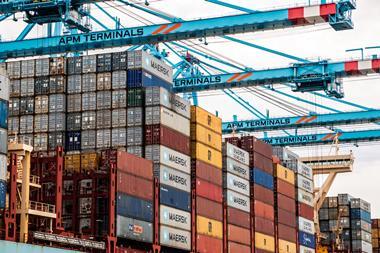The Pension Protection Fund has seen its reserves reach £9bn (€10.7bn) this year, up from the £5.1bn recorded last year.
“This means we have £9bn over and above what we estimate is needed to pay every current member and their dependents full compensation for life. These reserves help protect us against future risks,” the fund announced as it published its annual report and accounts for 2020/21.
The fund’s greatest risk remains the uncertainty about future claims following employer insolvency in this challenging environment, said Oliver Morley, the fund’s chief executive officer.
“Despite our strengthened funding position, we’re mindful that many of the schemes we protect have substantial deficits which could, if they were to claim, have a material impact on our reserves,” he added.
He expects more schemes to need the PPF’s help in the coming year, as some insolvencies due to the COVID-19 crisis will be inevitable.
However, Lisa McCrory, PPF’s chief financial officer, expects the fund’s “strengthened funding position will reassure members that we continue to be an essential lifeline for them”.
“We call on scheme trustees to remind their members of the vital protection we provide so they know their pensions are protected if the worst were to happen,” she added.
The PPF protects the financial futures of nearly 10 million people from more than 5,300 eligible UK defined benefit (DB) pension schemes.
Its role is to compensate people for their lost pensions if their employer fails and their scheme is unable to pay them what they promised.
The PPF also reported its assets under management grew from £36bn in 2020 to £38bn in 2021 and its growth assets returned 17.6% (£3.7bn), its largest return on this investment portfolio to date.
It also said it paid out £1bn in member compensation over the past financial year, covering 179,500 of the PPF’s 288,000 members who have already retired or are in receipt of survivor benefits.
Independent schools drop out of teacher fund
Nearly a quarter of the UK’s independent schools have left, or are planning to leave, the pension scheme for teachers, said Punter Southall Aspire following a Freedom of Information request.
A total of 284 of 1,222 schools in the UK said they have left or plan to leave the Teachers’ Pension Scheme (TPS) because the cost of contributions to the scheme has risen from 16% to 23%.
A further review of the fund’s contributions is due in 2022, Punter Southall Aspire said.
This means the price tag for schools has increased by 43% because of increased contributions they have to make, putting even more strain on budgets already under significant pressure, the consultancy explained.
Back in September 2019, 59 schools had left the TPS but Punter Southall Aspire’s request in September found they have since been joined by a further 213 schools with 12 more giving notice.
Stuart Arnold, a defined contribution consultant at the firm, along with his team, has been working with more than 30 independent school clients to help them with this challenge.
He said that even more schools are set to leave the TPS because higher costs pose an increasing risk, even though any new contribution rate will be pushed back to April 2024 as the sector adjusts to the aftermath of the pandemic.
This provides valuable time for schools to consider their place in the TPS and any alternative to ensure no rushed decisions are made.
“Financial managers, governors and bursars have enough to deal with at the moment without this added, further pressure,” he said.
“Costs for this pension scheme are only going one way. It might be a cost some schools are willing to bear but our work tells a different story for many,” he added.
He noted that pensions is a powerful recruitment and retention tool “but only if it’s cost-effective, sustainable and fit-for-purpose”.












No comments yet